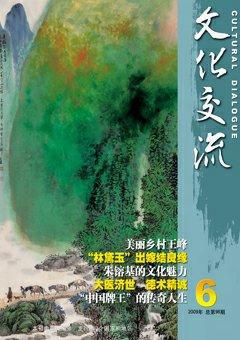Three Martyrs and Their Calligraphy
Ma Yongxiang

Yue Fei, Yu Qian and Zhang Cangshui are known as the three martyrs of the West Lake. They are the heroes buried on the lake although only one of them was a native of Hangzhou. The three had more than the West Lake in common. They all died for their loyalty to their emperors. All the three were killed by the reining emperors. Two were killed in Hangzhou. Two were politically rehabilitated later by the succeeding emperors of the same dynasty. The remaining one was honored by an emperor of another dynasty. And all the three martyrs were excellent military generals, poets and calligraphers.
General Yue Fei
General Yue Fei (1103-1142) was a general of the Southern Song Dynasty (1127-1279). The general was found guilty for a groundless allegation and executed by Prime Minister Qin Gui. Even the prime minister admitted there was no real charge at all. The real reason for the generals death was that the emperor and his prime minister wanted a peace deal after much of the north was lost to invaders from the north but General Yue Fei wanted to fight to retrieve the lost land. Twenty-one years after his execution Yue Fei was honored by another emperor of the Southern Song Dynasty. His bones were found and a state funeral was held. A memorial temple was built. The temple still stands on the lake while the much grander royal palace of the dynasty failed to survive the devastation of time and human caprices.
The temple keeps steles of Zhuge Liangs “The Second Memorial to the King Before Setting Off for War” in Yue Feis handwriting.

Yue Fei copied this famous text in the autumn of 1138 on his way northward to recapture the lost land. He stayed at Zhuge Liangs Temple one night as it rained. He took a stroll in the temple and saw a carved text of Zhuge Liang. More than 1,000-year-old text echoed in the generals heart. When a Taoist requested him to write an inscription in memory of his visit to the temple, Yue copied the historical document on paper. The handwriting was later carved onto the steles. Hundreds of years later the first emperor of the Ming Dynasty Zhu Yuanzhang read Yues calligraphy and commented that the style of the generals calligraphy reflected his integrity.
The temple has a large collection of the generals calligraphic works. And scholars and calligraphers in the following centuries lauded the calligraphy which mirrors the generals personality, integrity, and military prowess.
Yu Qian
Yue Qian (1398-1457) was a native of Hangzhou. He was academically brilliant since his childhood years. He became a metropolitan graduate in 1421 and became a high-ranking official of the dynasty. He served 19 years in Henan and Shanxi provinces as a military official. In 1499, he was appointed the minister of war. After the Emperor Yingzong was captured by the invading Wala Army from the north, Yu Qian was one of the high-ranking officials who supported to have a new emperor on the throne. And he opposed to moving the capital to the south. When the invading army besieged the capital, Yu Qian organized the defense and routed the enemy. In 1450, the Wala army offered to negotiate a peace deal. After the peace deal, the invaders withdrew and released the captured emperor. Seven years later, the dethroned emperor came back to power through a coup and Yu Qian was accused of treason and executed. He was politically rehabilitated by Emperor Wanli of the same dynasty. His tomb and memorial temple are situated in Santai Hill on the West Lake. Yus former residence is at 42, Temple Lane, Hefang Street in Hangzhou.
Yu Qians calligraphic style feature elegance, nobility, spiritual force. His handwritings are treasured by collectors. His representative masterpiece is an inscription he made in a painting. The inscription is 164 characters in 19 lines. The brushstrokes feature precision, smoothness and elegance. The handwriting testifies the heros calligraphic preeminence.
Zhang Cangshui
Zhang Cangshui (1620-1664) was a provincial graduate in 1642, just two years before the Ming Dynasty fell. He was also a good horse rider and archer. In 1644, Prince Luwang fled to Tiantai, Zhejiang and set up a government in exile. Zhang was appointed military minister in charge of the national defense. Zhang led an army to fight the Qing army in coastal areas of Zhejiang. In partnership with Zheng Chenggong, Zhang Cangshui moved toward the Yangtze River. They captured four prefectures. But Zheng Chenggong withdrew after the united army failed to take Nanjing. Fighting alone, Zhang Cangshui was defeated and withdrew to the islands off Zhejiang. In hiding on islands for years, he was finally captured. While jailed in Hangzhou, he wrote poems to express his admiration of Yue Fei and Yue Qian and his dream of being buried on the West Lake. After his refusal to surrender to the Qing Dynasty, he was executed in downtown Hangzhou in September, 1664. He was granted an honor by Emperor Qianlong in 1776. In 1875, a temple was built in his honor in downtown Hangzhou. His tomb is at the foot of the northern side of Nanping Hill on the West Lake.
Though Zhang is never known as a calligrapher, scholars find his calligraphy excellent and point out that his is a style based on masterpieces of Tang master calligraphers and hat his calligraphy bespeaks excellence. The handwritings of the poems he wrote in his prison days in Hangzhou testify to his excellence in calligraphy. □

